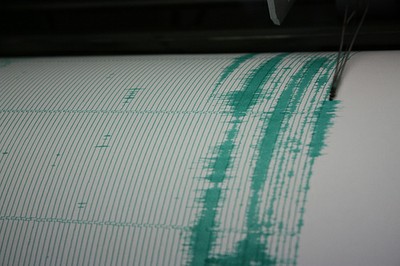Editor’s note: This blog post was contributed by guest blogger Edward Wolf, a Portland writer and contributing author to Worldchanging: A User’s Guide for the Twenty-First Century.
 I have always been eager to understand the natural and human capital of the Pacific Northwest, the attributes of people and place that shape the possibilities of our home. I tend to frame sustainability in these bioregional terms.
I have always been eager to understand the natural and human capital of the Pacific Northwest, the attributes of people and place that shape the possibilities of our home. I tend to frame sustainability in these bioregional terms.
But I’ve noticed that even the most dedicated bioregionalists treat geology, if they consider it at all, more as a passive template than an active force. I think it’s time to broaden that notion. We may be approaching one of those infrequent moments when geology meets history.
The Cascadia Subduction Zone is a plate-boundary fault that stretches from Cape Mendocino to Vancouver Island. It spawns earthquakes and tsunamis as powerful as any on earth. Barely known 25 years ago, Cascadia is now the most thoroughly studied subduction zone on earth.
New evidence suggests that Cascadia ruptures far more often than was believed even a few years ago. Cascadia has generated more than 40 earthquakes of Magnitude 8 or greater (i.e., comparable to the Chilean earthquake of February 2010) in the last 10,000 years. The most recent rupture of the fault has been dated precisely to January 26, 1700—311 years ago. About 80 percent of the intervals between those 40 documented earthquakes appear to be shorter than 300 years.
Geophysicists assess probabilities in a variety of ways, but their conclusions boil down to “we are living on borrowed time.” The best-informed people I know expect the next Cascadia quake and tsunami in our lifetimes, certainly in our children’s lifetimes. No aspect of our infrastructure has been built to withstand the shaking or the waves we will experience. Strange to say and harder to accept, in our vulnerability we may resemble Haiti more than we resemble Chile or New Zealand.
An earthquake of Magnitude 8 or greater on the Cascadia fault will not be “like the last earthquake, only bigger.” It may be more like a “four-minute war” whose impacts will be experienced simultaneously by millions of Northwesterners. It may destroy buildings not just in Seattle or Portland, but in every city from Eugene to Vancouver. It will fell bridges, topple power lines, silence cell networks, and collapse fuel storage tanks. The quake and the tsunami it generates will turn parts of the coast into an archipelago of isolated communities cut off from each other and from interior valleys.
Even if it causes no fatalities, Cascadia is likely to be the greatest environmental disaster ever experienced in the Pacific Northwest due to fuel and chemical spills, dam ruptures, water contamination, and debris. But it will cause fatalities, because as the adage goes, “earthquakes don’t kill, buildings kill.” Only a small proportion of the built environment of the Pacific Northwest has been constructed to modern seismic building codes, which (unlike California) are still quite recent here.
The situation with public schools in Oregon is particularly dire. Most schools statewide pre-date the first seismic codes, adopted in 1994. Seismic upgrades have been piecemeal. Eight hundred and four public schools statewide are rated high or very high collapse risk, among them unreinforced masonry structures and precast concrete structures not designed to withstand shaking. More than 350,000 Oregon children attend high-risk schools, roughly two-thirds of statewide enrollment.
The risks of environmental contamination and mass casualties are real. Less noted are the ways a Cascadia earthquake and tsunami could undermine progress toward sustainability. Insulating an historic school or office building ceases to advance sustainability if the structure collapses and cannot be reoccupied—the payback ends. A charging infrastructure for plug-in vehicles will do nothing for urban mobility if the power grid fails.
Seismic resilience involves decisions and investments in the same systems that make up the sustainability agenda: energy, transportation, water, and the built environment. Taking seismic resilience seriously offers a way to protect the important investments we are making today in sustainability.
Restless Cascadia demands attentive citizenship. Sustainability in “the greenest corner of history’s richest civilization” (still true, even in these pinched times) should come to mean a society that takes steps to strengthen itself against the Cascadia earthquake/tsunami duo that is as native to our home as Douglas-fir and Chinook salmon.
As frightening as Cascadia can seem, I find the prospect in some respects exhilarating. A resilient sustainability can begin here, and it should.
Seismograph photo courtesy of flickr user tonyjcase under a Creative Commons license.

Comments are closed.